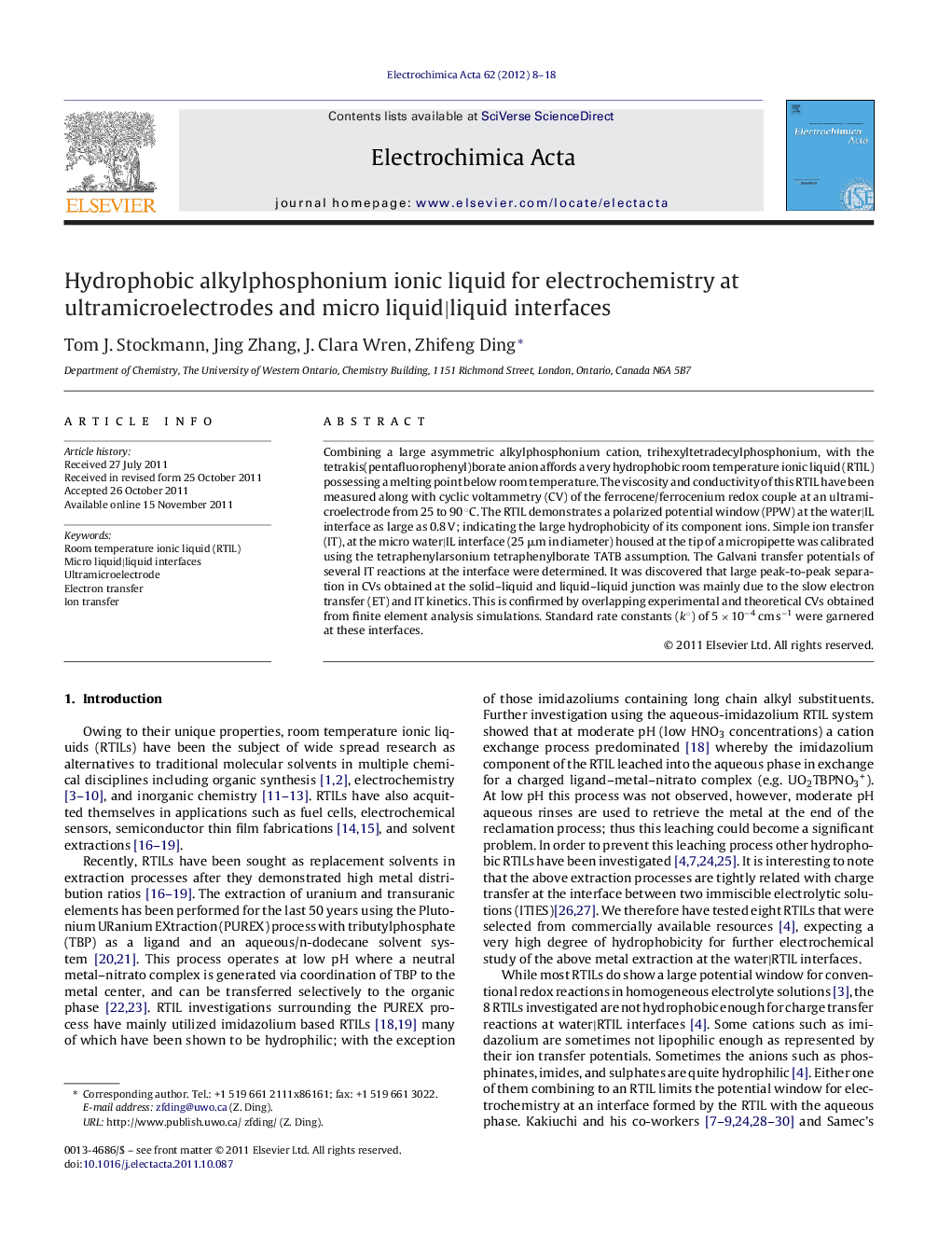| Article ID | Journal | Published Year | Pages | File Type |
|---|---|---|---|---|
| 189018 | Electrochimica Acta | 2012 | 11 Pages |
Combining a large asymmetric alkylphosphonium cation, trihexyltetradecylphosphonium, with the tetrakis(pentafluorophenyl)borate anion affords a very hydrophobic room temperature ionic liquid (RTIL) possessing a melting point below room temperature. The viscosity and conductivity of this RTIL have been measured along with cyclic voltammetry (CV) of the ferrocene/ferrocenium redox couple at an ultramicroelectrode from 25 to 90 °C. The RTIL demonstrates a polarized potential window (PPW) at the water|IL interface as large as 0.8 V; indicating the large hydrophobicity of its component ions. Simple ion transfer (IT), at the micro water|IL interface (25 μm in diameter) housed at the tip of a micropipette was calibrated using the tetraphenylarsonium tetraphenylborate TATB assumption. The Galvani transfer potentials of several IT reactions at the interface were determined. It was discovered that large peak-to-peak separation in CVs obtained at the solid–liquid and liquid–liquid junction was mainly due to the slow electron transfer (ET) and IT kinetics. This is confirmed by overlapping experimental and theoretical CVs obtained from finite element analysis simulations. Standard rate constants (k°) of 5 × 10−4 cm s−1 were garnered at these interfaces.
Graphical abstractFigure optionsDownload full-size imageDownload as PowerPoint slideHighlights► A hydrophobic room temperature ionic liquid (RTIL) was prepared and characterized. ► Ferrocene oxidation reaction in the RTIL was investigated at an ultramicroelectrode. ► The RTIL demonstrates a wide polarized potential window at the water|IL interface. ► Galvani transfer potentials of several IT reactions at the interface were determined. ► CVs at the ultramicroelectrode and at the micro water|IL interface were simulated.
